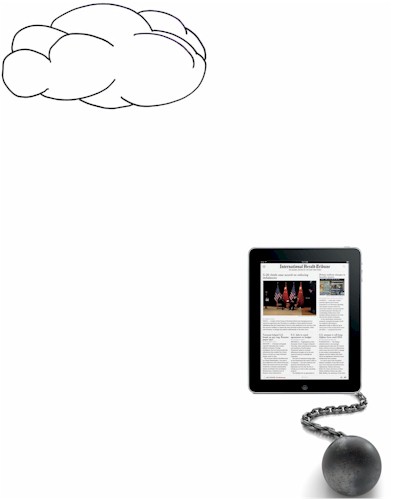The iPad 2 is one of those devices you love to hate. It underscores the fact that Apple can build great hardware into sleek form factors. It’s a testament to their prowess in dominating the tablet industry, one that Microsoft created and then had no idea what to do with. The hardware specs, while not incredible, will still sell millions of units throughout the year because the competition still isn’t there.
I recently got to see a friend playing with a Motorola Xoom. It’s an interesting piece of technology. The camera is beautiful, and puts the entire Apple lineup to shame with image quality and speed. However, Android 3.0 continues to have the incredible lag that has choked every other version of Android that has promised to fix it. And it crashed not once, but twice, using Google Maps.
At the same time, you want to hate the iPad 2. I recently acquired a Nook Color for the purpose of rooting it, and the first thing I noticed: I didn’t have to plug it into a computer to start using it. I walked through the initial guides, watched a couple video tutorials, signed up for an account and then I was done.
There was no “please connect this to iTunes to use it”. In fact, the Nook never needs to connect to a computer. Granted, the Nook is a glorified e-reader, but this is actually the norm among Android tablets. For all Apple goes on about how their tablet is “magical”, “amazing” and the herald of the post-PC era, it needs a computer to do a lot of things.
Where’s The Cloud?
HP’s WebOS release features not one or two, but three separate cloud services, integrated right into the device. Apple will never admit that a competitor is better. But really, MobileMe has been outgunned since the day Apple released it. The only remotely interesting feature of MobileMe was the ability to track your iPhone/iPad if it got lost, which Apple made freely available only recently.

But even HP’s solution isn’t good enough. Nor is Android, with all the power of Google behind it. I look at my iPad almost daily and think “I could almost replace my laptop with you.” Almost is the key word there. Let’s take a look at a few things that could make the iPad (and tablet in general) better.
Drop the Wi-Fi Only Model
For all that Apple has done to position the iPad as a always-connected device, it still is selling a Wi-Fi only version. Why? A major reason is price. But an extra $129 for a few dollars extra in components is a pretty high tax.
All models should come with WWAN + Wi-Fi capability, with the entry-level model still priced under $500.
Wireless Sync
This one has been a grievance among iPhone users for awhile, and the iPad perpetuates it. Why do I have to use a stupid proprietary USB cable to enable and synchronize my device? Wireless syncing to your computer, or even better, the cloud, would make syncing an always-on affair. Download a new app? It would sync automatically to your computer. Apple already has the Bonjour service that auto-installs with iTunes. Why not use it for wireless sync?
Allow True Integration
There is no option in the SDK to have access to anything on the device, other than each application’s ‘”home” directory. Access to Photos and Contacts were added in iOS 4.0, along with the Calendar, but in a very controlled fashion. Why can’t I have a Pages document that I can save to my phone that syncs automatically with Dropbox?
Apple chooses to “protect" you from downloading an App that can affect the local filesystem. Granted, with Google’s recent malware issues, Apple’s approach has some merit. But overall, Apple’s approach is restrictive to the point of hampering innovation.
Many point to MobileMe as the solution to this problem. But until Apple releases the next iteration of its service, this has yet to be seen. It would make sense for Apple to present MobileMe as its solution for cloud storage on iOS. But it is certainly far from the only solution available.
Apple has not shown enough interest in MobileMe to make me want to trust my entire online life to it (or at least the part of that life that lives in iOS devices). Apple is still a hardware company at heart, so SaaS is something it struggles with on most fronts (just ask anyone who has had the unfortunate experience of using iTunes Connect).
Inter-device Communication
HP’s WebOS tablet demo showed it communicating with Pre phones fairly seemlessly. But the iPad and iPhone at this point are basically separate devices. You can use the iPad’s camera kit (there’s that hardware ball and chain again) to connect and download photos from the iPhone, but that’s it.
This actually applies to the whole iOS line. My friends and I regularly sit together discussing a document on our iPads. So when one of us is a revision or so behind, why can’t we just share a file with a click or swipe?
The Way Forward
The iPad is a nice piece of hardware to be sure. But Apple is still living in its isolated, controlled “Jobsian” ecosystem. The sandbox tactic will only work for so long. As history has shown, eventually people will tire of not being able to do what they want on their own devices.
We’re all still waiting to see what Apple is going to use that big ol’ North Carolina data center for. Let’s hope that Apple will use it to finally create cloud products as innovative and easy to use as their hardware. Android is certainly headed in that direction.
Use the Cloud, Apple. It’s your only hope.
